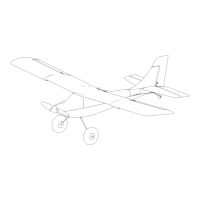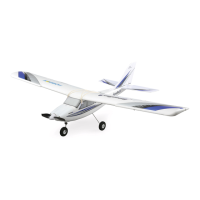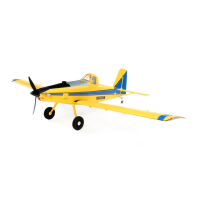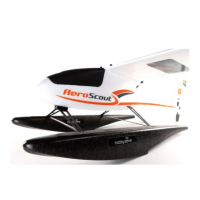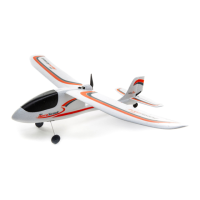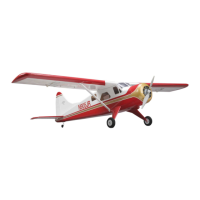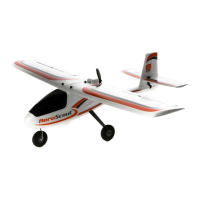EN
Apprentice STS
10
Transmitter and Receiver Binding
Binding is the process of programming the control unit to recognize the GUID
(Globally Unique Identifi er) code of a single specifi c transmitter.
The aircraft should be bound to the transmitter at the factory, but if you need to
re-bind them, follow these steps. If your aircraft does not respond to the transmitter
when the batteries in the aircraft and transmitter are fully charged, your aircraft
and transmitter may need to be re-bound using the instructions below.
Please refer to the optional parts list in this manual or visit www.bindnfl y.com for a
list of compatible transmitters. For the BNF aircraft, you need to ‘bind’ your chosen
Spektrum™ DSMX
®
technology equipped aircraft transmitter to the receiver for
proper operation.
IMPORTANT: The throttle will not arm if the transmitter’s throttle control is not put
at the lowest position. If you encounter problems, follow the binding instructions
and refer to the transmitter troubleshooting guide for other instructions. If needed,
contact the appropriate Horizon Product Support offi ce.
Binding Procedure (without GPS Module)
1. Make sure the transmitter is
powered off.
2. Make sure the transmitter controls
are neutral, the throttle is in the
low position, and the aircraft is
immobile.
3. Connect the fl ight battery in the
aircraft, then power on the ESC
switch. The Flight Controller LED will
begin to fl ash red and blue.
4. On the remote Spektrum receiver
that is connected to the fl ight
controller, press and release the
bind button. The receiver LED will
fl ash rapidly.
5. Press and hold the trainer button
on the top of the transmitter while
turning on the power switch.
6. When the receiver binds to the
transmitter, the receiver LED will
be solid on. Flight controller LED in
windshield will also be green when
in beginner mode. (without LAS or
GPS installed)
Once bound the receiver and transmitter
should retain their bind for future fl ights.
IMPORTANT: IF THE OPTIONAL GPS MODULE IS INSTALLED the aircraft will not respond to transmitter commands after binding if it cannot acquire a GPS
signal.
Binding: After binding with the GPS module installed, the aircraft will search for a GPS lock, indicated by the elevator slowly cycling up and down. After
acquiring a GPS lock, all fl ight controls will respond normally except throttle. The throttle will be limited, allowing the aircraft to be taxied out to takeoff
position on the runway. Set the home position to regain full functioning throttle. See the Powering On With GPS section of this manual for further details.
Compass calibration: After binding the fi rst time with the GPS module installed in the aircraft, compass calibration is required. The aircraft will automatically
enter the compass calibration sequence after installing the GPS for the fi rst time. This is indicated by the ailerons slowly cycling up and down. The aircraft will
not respond to transmitter commands with the GPS module installed until calibration has been completed. See the Compass Calibration section of this manual
for further details.
Subsequent binding with the GPS module will not require compass calibration.
Applies only when the optional GPS module is installed
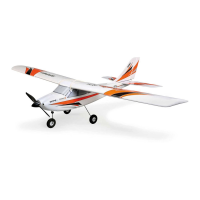
